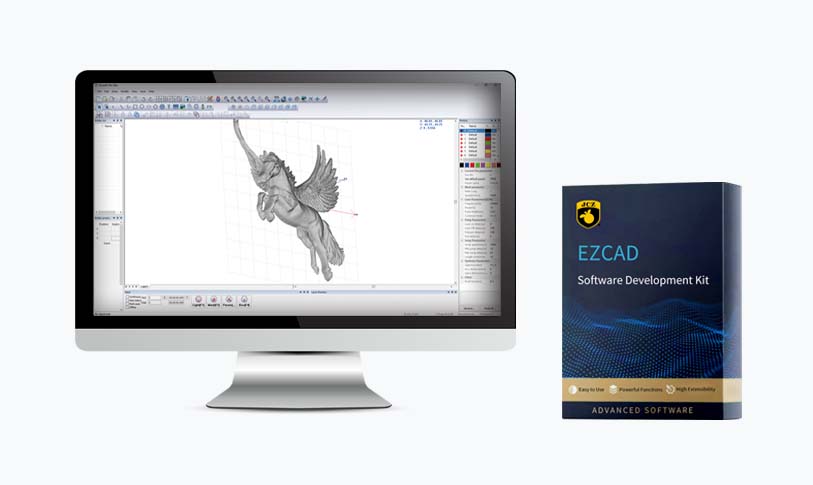
Exploring the Cutting-Edge Innovations and Versatile Applications of CO2 Laser Machines in Modern Industries
****
In the realm of manufacturing and precision engineering, CO2 laser machines have emerged as game-changers, revolutionizing the way materials are cut, engraved, and processed. These advanced laser systems employ the principles of laser technology to deliver high-quality results across various applications, making them indispensable tools in numerous industries. In this article, we will delve into the features, advantages, and diverse applications of CO2 laser machines, highlighting their significance in today’s fast-paced industrial landscape.
A CO2 laser machine utilizes a gas mixture that predominantly contains carbon dioxide, along with nitrogen and helium. This gaseous mixture is excited electrically or through other means, generating an intense beam of infrared light. The unique wavelength of the CO2 laser (10.6 micrometers) allows it to be absorbed effectively by a wide range of materials, including wood, paper, plastics, glass, and even metals, making it an incredibly versatile tool.
One of the standout features of CO2 laser machines is their precision. Unlike traditional cutting methods that may rely on mechanical force or heat, CO2 lasers offer a non-contact cutting mechanism. This means that the laser does not physically touch the material being processed, minimizing the risk of distortion or damage. The result is a clean, precise cut with smooth edges and minimal kerf, which is particularly important in applications where the quality of the cut is paramount.
In addition to their precision, CO2 laser machines are known for their speed. The ability to quickly traverse large areas and cut through materials efficiently increases productivity, allowing companies to meet tight deadlines without compromising on quality. This speed is particularly beneficial in industries such as textiles, signage, and packaging, where time-sensitive projects are common.
Cost-effectiveness is another compelling reason for the rising popularity of CO2 laser machines. Although the initial investment may be significant, the long-term savings due to reduced waste, faster production times, and lower labor costs are substantial. Additionally, the versatility of these machines means that companies can expand their offerings without investing in multiple specialized tools.
Among the wide-ranging applications of CO2 laser machines are engraving and marking. The capacity to engrave intricate designs into materials like wood and glass has made these machines favorites in the crafting and gift industries. Customizable products such as personalized gifts, signage, and awards can all be easily created, enhancing customer satisfaction and fostering brand loyalty.

Exploring the Cutting-Edge Innovations and Versatile Applications of CO2 Laser Machines in Modern Industries
In the aerospace and automotive sectors, CO2 lasers are increasingly used for cutting and marking parts. Their precision ensures that components meet stringent specifications, while their efficiency contributes to streamlined production processes. The ability to work with a variety of materials enhances their appeal, as both industries utilize an array of substances, from lightweight composites to durable metals.

Exploring the Cutting-Edge Innovations and Versatile Applications of CO2 Laser Machines in Modern Industries
The medical field has also embraced CO2 laser technology, particularly in surgical applications. CO2 lasers are employed for precise incisions, minimizing injury to surrounding tissues and promoting quicker healing. The medical industry benefits from the reduced risk of infection and scarring, as well as shorter recovery times for patients. These advantages make CO2 lasers a valuable tool for surgeons and healthcare providers.
Moreover, CO2 laser machines are environmentally friendly. Traditional cutting methods often produce significant waste and require substantial energy consumption. In contrast, the laser cutting process is more efficient, producing minimal scrap material and utilizing energy sources more effectively. This aspect aligns with the growing emphasis on sustainability and reducing the environmental impact of manufacturing processes.
As technology advances, the capabilities of CO2 laser machines continue to evolve. Features such as computer numerical control (CNC) integration, advanced software for design and machining, and improved cooling systems are becoming standard, further enhancing the performance and usability of these machines.
To conclude, CO2 laser machines represent a significant advancement in engineering technology, offering precision, efficiency, and versatility across a wide range of applications. Their unique capabilities are transforming industries, from manufacturing and healthcare to crafting and signage. As more businesses recognize the benefits of incorporating CO2 laser technology, the future of laser cutting and engraving looks promising, paving the way for innovation and improved productivity in the global marketplace.laser cutting machine controller



